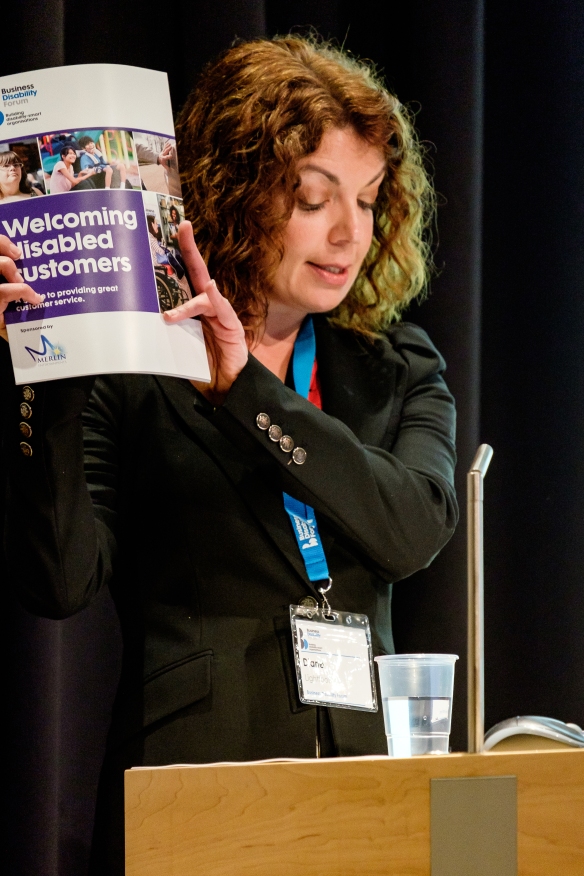Yesterday (19 December 2019), the Queen addressed Parliament to deliver her 2019 speech. Angela Matthews, our Head of Policy, looks at the disability and business-related elements of what she promises her Government will deliver

Leaving the EU and trade agreements
Leaving the European Union (EU) on 31 January is a priority. After this date, global trade agreements will commence. Business Disability Forum has worked hard to provide evidence for why the Government must expand its international trade agreement procedures to ensure the impact on accessibility and disability inclusion is not forgotten or disregarded during such decisions. The Joint Committee on Human Rights (JCHR) has recommended such to Parliament (Business Disability Forum made this recommendation during the Committee’s call for written evidence on the issue earlier this year). Our policy team will be monitoring how far this recommendation becomes a reality embedded into the heart of the Government trade agreement decision-making processes. The Queen promised in her speech that the “integrity and prosperity of the United Kingdom is of the utmost importance to my Government”. Developing more equality-conscious procedures in our global economic decision-making is a great, hugely impactful way for the Government to live up to this.
The NHS
The Queen also promises that the Government will “deliver on the people’s priorities”. The topic that follows is, of course, the NHS. The NHS is crucial to supporting and maintaining our everyday general health; but for very many employees, is it the system that supports their condition so that that can stay in work. As the Improving lives strategy brings the health and work settings ever closer together, never has it been clearer that for many, many employees, the NHS is a huge part of their lives that they rely on (for example ongoing treatment and rehabilitation which allows them to be well as they stay in and develop at work). For this reason alone (and many others), there will be a ‘sigh of relief’ that hospital charges will be removed “for those in greatest need”. Who those in “greatest need” are, we are yet to see. Many carers and people receiving treatment often need to be parked at hospitals for a day at a time as visits and treatment cycles and appointments can be lengthy. The financial impact of just parking in the place someone needs to be for their or someone else’s disability or condition can be immense.
Working life
“Measures will be brought forward to encourage flexible working” will be welcomed by many. Our policy and advice teams still see that one of the top three adjustments employees with disabilities and long-term conditions say helps them stay employed is their employer’s flexible working culture. For this reason (and others), we have seen many more of our membership organisations revise their flexible working policy for all staff, and for flexible working to be introduced into workplace adjustment policies. Alongside this, the Queen also reminds us that there will be new measures to allow greater leave entitlement to unpaid carers, who are the somewhat ‘silent backbone’ supporting the social care system at present. Without supportive carer policies, we hear of employees with caring responsibilities often care for a relative, partner or neighbour, which can have an impact on their own physical and mental energy levels, and while coming into work and trying to be productive. Measures to support the millions of unpaid carers in our economy are not just welcome, but crucial.
Education
We are promised that “every child has access to high quality education”. The promise of increased skills development and better education opportunities was a feature of many pre-election manifestos. We cannot emphasise enough that “high quality” must necessarily include accessible and inclusive (a topic we asked for action on in our recent manifesto), which many learning formats, programmes and qualification structures are currently not. And this must include people with disabilities at all ages. We know that not everyone is ready for (or wants to be) learning and taking part in non-mandatory education at the same age and time as everyone else (sometimes for disability-related reasons) and an inclusive society needs to ensure that learning and development opportunities are available to people when they choose.
A new Constitution, Democracy and Rights Commission
The Queen announced that a “Constitution, Democracy and Rights Commission” will be established which we heard would “undertake a review of every aspect of the post-Brexit constitutional settlement”. We wait to hear the specific terms of reference for this Commission and trust that the Commission does not just “promote human rights” but enhances and enforces them.
For more policy news go to businessdisabilityforum.org.uk/policy
















